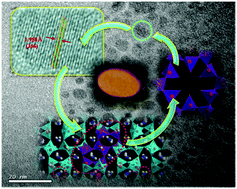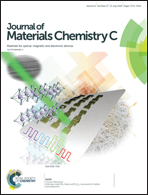K4CaGe3O9:Mn2+,Yb3+: a novel orange-emitting long persistent luminescent phosphor with a special nanostructure
Abstract
In this work, a novel germanate-based orange-emitting long persistent luminescent (PersL) phosphor, K4CaGe3O9(KCGO):Mn2+,Yb3+, has been successfully synthesized via a solid-state reaction. The special nanostructures of KCGO:Mn2+ and KCGO:Mn2+,Yb3+ were indicated by transmission electron microscope (TEM) images, where the block particles of these samples are shown to consist of many irregular spherical nanoparticles and the size of these spherical particles is less than 10 nm. This special nanostructure contains many defects and could provide the preconditions for the PersL properties of KCGO:Mn2+. Furthermore, after co-doping with Yb3+, the PersL properties are effectively improved due to the high concentration of new traps caused by the non-equivalent substitution of Yb3+. With the optimum doping concentration and sufficient excitation with UV light, the afterglow of KCGO:0.02Mn2+,0.015Yb3+ can persist over 5 h above the recognizable intensity level (≧0.32 mcd m−2). Both the fluorescence and phosphorescence spectra of KCGO:Mn2+,Yb3+ exhibit only one broad emission band, which belongs to the 4T1(G)–6A1(S) transition of Mn2+. In addition, with the help of thermoluminescence (TL) curves, the processes and possible mechanism are studied and discussed.



 Please wait while we load your content...
Please wait while we load your content...